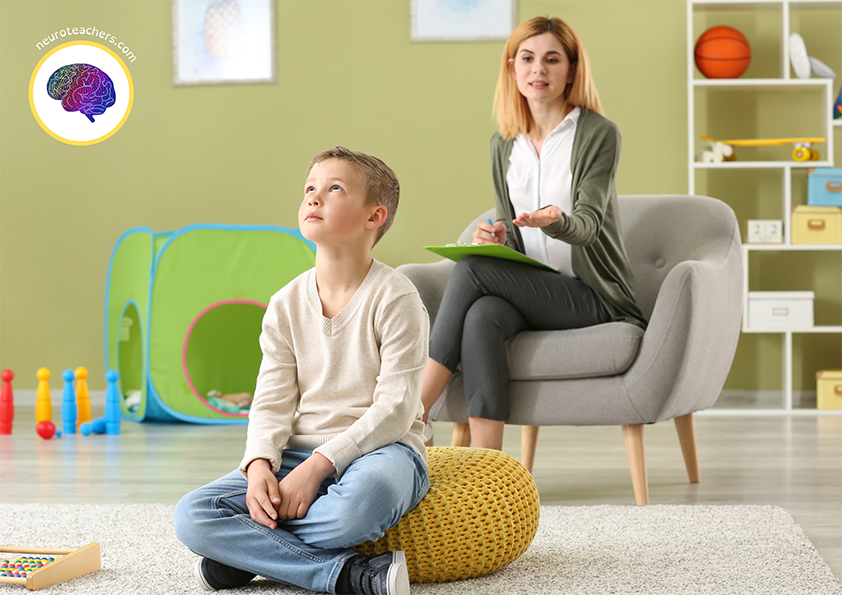Catrina Lowri is a neurodivergent teacher, trainer, and coach. As well as having 22 years’ experience of working in education, she also speaks as a dyslexic and bipolar woman, who had her own unique journey through the education system.
I’m writing this by popular request. I’ve been reluctant. The topic is highly controversial, with many strong and opposing opinions from both ‘behaviour experts’ and neurodivergent advocates. There comes a time, however, when it is better to tackle controversy head on than avoid it. Currently, there are so many misconceptions about behaviour flying around the internet and media in general, so I thought it was about time I discussed this topic in more depth.
I’ve decided I’ll keep this brief and write a series of short blogs. This is your ‘Behaviour 101’, next I will be talking about my experiences as a recovering behaviouralist, and finally I’ll talk about how I came to relational practice, and why this works so well for neurodivergent learners. So, you can read one or two or the series 3. But start with this one.
Here I’m going to tell you exactly what behaviour is and isn’t and some small changes you can make straight away which will make a big difference.

We need to discuss language
Challenging? Disruptive? Or Distressed? This is the first point of controversy.
In 2021 worked on some resources on exclusion reduction for the Autism Centre for Education and Research (ACER) at the University of Birmingham and ,even this panel of autism researchers ,couldn’t agree on how to describe behaviour. In the end we settled on the definitions I use the video below.
https://www.youtube.com/watch?v=t4BEpTUC04U
The Autism Education Trust, young person’s panel suggested referring to behaviour as ‘distressed’. This is an accurate description of the lived experience of many autistics and neurodivergent people, so it’s the term I’m inclined to use, however the definitions can’t be ignored. If we really want to understand what people mean, when they say behaviour, we need to understand all three terms. But, we also need to consider changing our language.
Dysregulation
Many neurodivergent trainers avoid the word behaviour altogether. This too is understandable. Even the word ‘behaviour’ has negative connotations for those of us with a different brain pattern. It’s fair to say that every ND person has experienced at least a few strong requests to change their behaviour, because it didn’t fit in with the neurotypical view of how people should be in this world. Therefore, the word itself is triggering for some of us.It seems logical then, to use the word ‘dysregulation’ instead.
Although I’m still trying it on for size, to me this seems like a good alternative. It explains that the child or young person you are working with is outside of their window of tolerance at that moment, so needs your help to get them back to calm/ alertness. (See my blog here for more details https://neuroteachers.com/post/ben-and-the-dust/ )
The bad news is also the good news
‘Understand that 6/10 incidences of challenging behaviour are triggered by the adult in the room.’
I first heard this from Andy McDonnell at Studio III when I was doing my Masters in Autism at University of Birmingham, and it blew my mind. By this point I’d already been a Head of Year and a SENCO but this had never occurred to me. So, of course I had made a lot of mistakes.
It is only when you understand this, well researched and evidenced fact, that you can make any meaningful change to behaviour.
But once you really get this, the good news is that in 6/10 cases, you could have done something to prevent the dysregulation. Which is amazing! When else in education can you make a 60 percent improvement in wellbeing and outcomes, just by making small changes to how you worK?

Behaviour is, without a shadow of a doubt, communication
I have spent over 2 decades studying behaviour. Mainly, if I’m truthful, because I wanted to find out more about why I had behaviour differences myself. I wanted to know why I’d explode if I felt overwhelmed, and after years of study, observation, and therapy, I can say, without a shadow of a doubt, behaviour is communication.
If I experience dysregulation, it’s because of unmet need.
If you experience dysregulation, it’s because of unmet need.
If anyone experiences dysregulation it’s because of unmet need.
If you’d like further information, read this blog.
More good news
If you have a learner in mind who is often dysregulated, here are some questions you can ask yourself which could make a big difference tomorrow when you are working with them.
1. Can I change the language I use about behaviour?
2. Did I trigger this?
3. What unmet need does this communicate?
These are the first steps needed towards making, real and sustained change which will improve your relationship with your learner. And relationships, as I will go on to explain, are everything. Please read, enjoy, share and comment. Discover part 2 here https://neuroteachers.com/post/a-controversial-blog-about-behaviour-part-2/
If you would like to like training about behaviour for your school or parent carer forum please follow the link below https://neuroteachers.com/training/
For resources to help you reflect on the unmet needs which may be triggering behaviour, follow the link below for my ebooks https://neuroteachers.com/product/neuroteachers-neurodiversity-and-reflective-practice-ebook/
